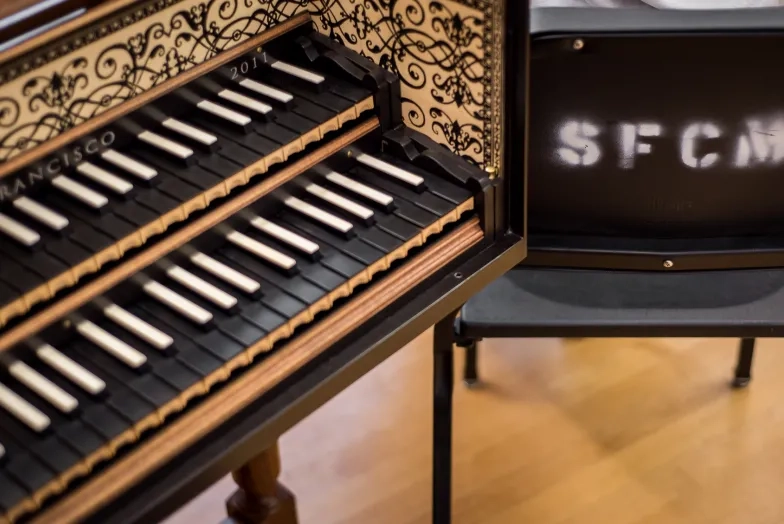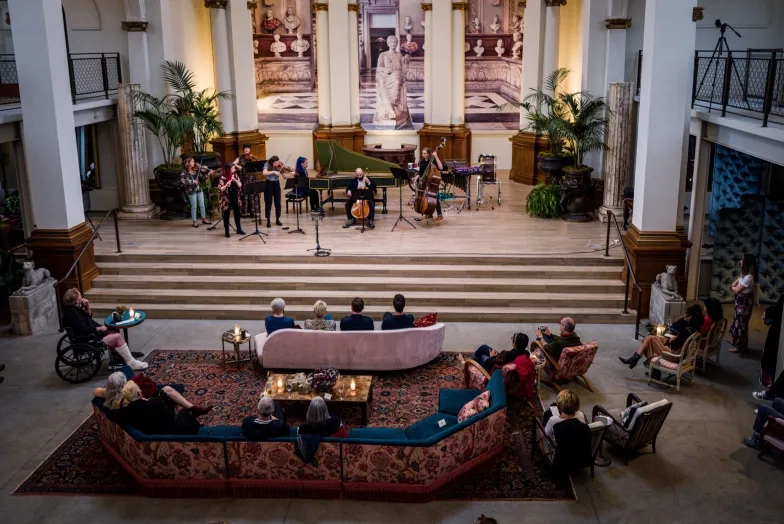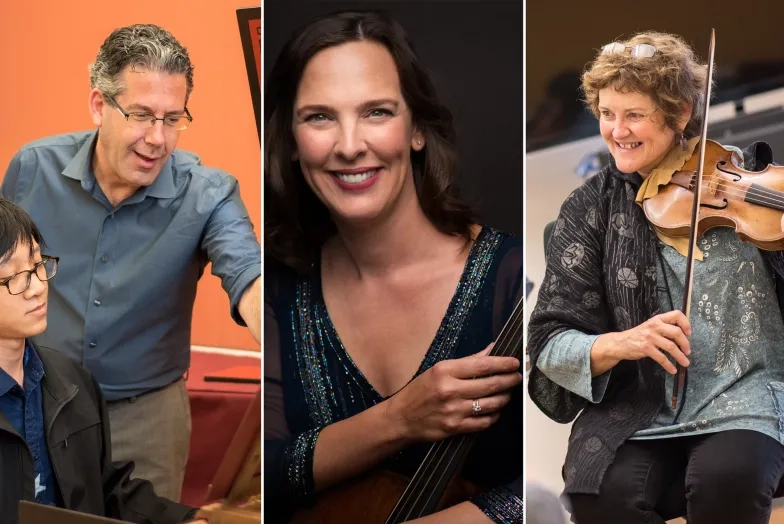Smithsonian Conference Ponders Future of Historical Performance
The study of historically informed performance is flourishing at SFCM and other American colleges and conservatories even as the field broadens its focus well beyond baroque music. The Smithsonian Chamber Music Society recently hosted a three-day conference on developments in the field. SFCM President David H. Stull, Historical Performance Program director Corey Jamason and four students participated, joining representatives from other schools with long-established early music programs including Indiana, Juilliard, Oberlin, Peabody and Yale.
President Stull led an opening panel discussion among deans and program directors examining the state of historical performance instruction in higher education. Jamason, who called the dialogue "lively and very upbeat," says SFCM continues to see strong student interest in historical performance, with about 45 instrumental and voice students – more than 10% of the entire student body – enrolling in Baroque Ensemble. Many others take specialized courses in areas such as harpsichord, fortepiano, lute, baroque strings and continuo.
Baroque Ensemble members Crystal Kim ’15, soprano, Corinne Rydman ’16, mezzo-soprano, and theorbo players Keith Barnhart ’15 and Alan Lopez ’15 performed scenes from Monteverdi's L'incoronazione di Poppea as part of the symposium’s two-concert student showcase.
Barnhart, a guitarist about to receive his master’s degree, decided to attend SFCM largely for the chance to study theorbo, lute and baroque guitar, period instruments he had heard of but never touched. He now sees historical performance as both a path to specialization and a means to develop core skills, from score research to a nuanced technique. By raising fundamental questions about music, he says the discipline encourages students to make their own informed discoveries. “What was renaissance music? What was early [medieval] music?... We know very few 100% truthful facts about what that would sound like. So it does require a lot of creativity, a lot of improvisation and flexibility, and I think those things are very important as a musician.”
Later music is increasingly being viewed through the lens of historically informed performance, as well. Corey Jamason and colleagues from Stanford, Cornell and London’s Royal Academy of Music discussed a growing focus on Romantic and early twentieth-century repertoire, which Jamason calls “perhaps the most exciting aspect of HIP today.” SFCM is at the forefront of schools offering courses in this area. “Studying nineteenth century performance practice, largely through the study of primary source materials such as historical recordings, is illuminating in so many ways,” says Jamason. “In a strong sense, we gain new teachers, we are exposed to new ideas. This has always been the goal of historical performance.”


